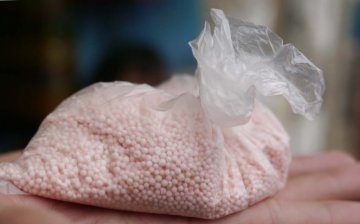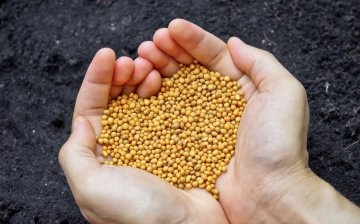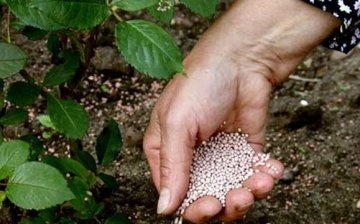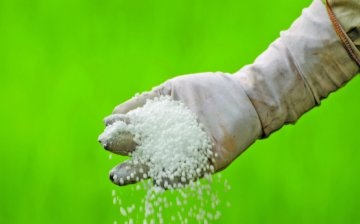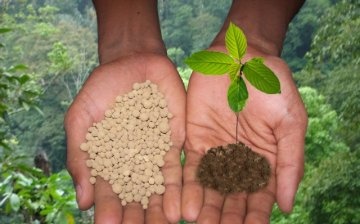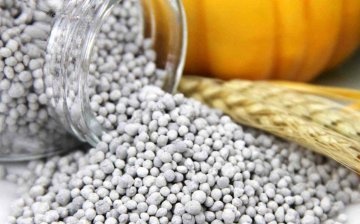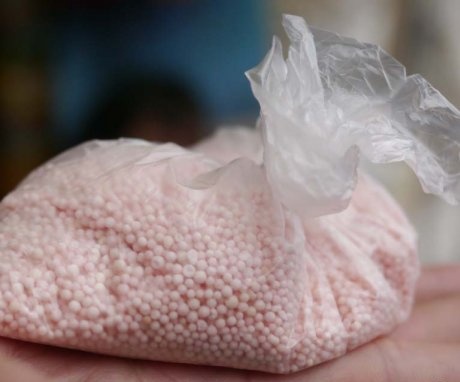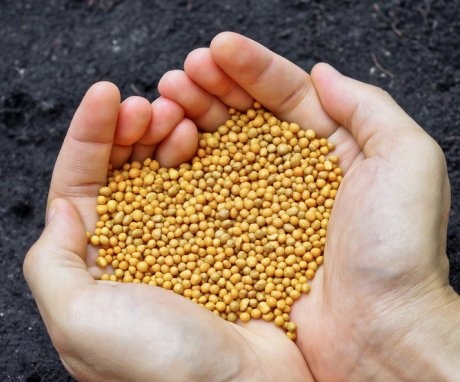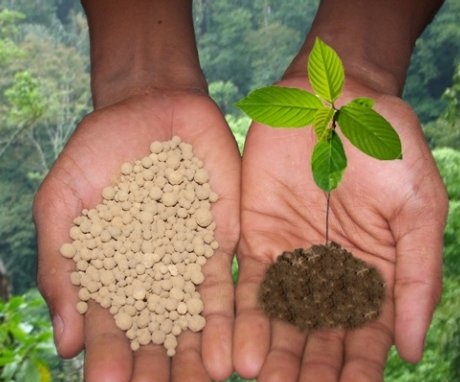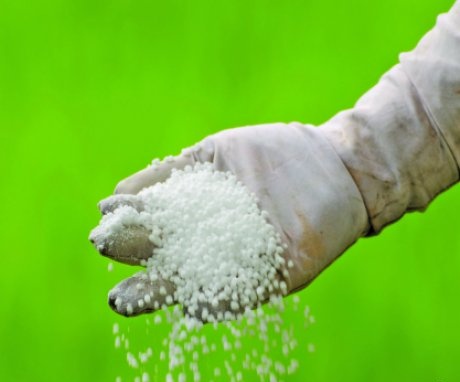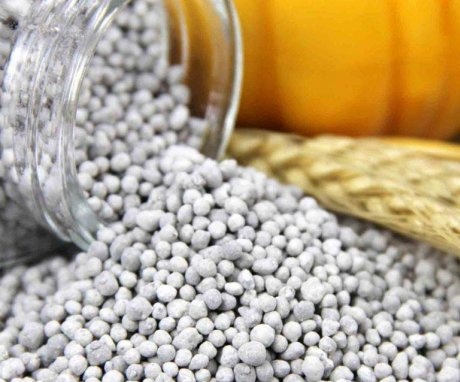What is it - saltpeter: types and rules of application
Saltpeter are minerals that contain nitric acid salts. Hence the name: in Latin sal nitrum - nitric salt. This name was formed in the workshops of medieval alchemists, and nowadays has entered the lexicon of chemists, agronomists, gardeners, pyrotechnics. Saltpeter is one of the most affordable fertilizerscontaining nitrogen, so it is actively used in agriculture.
Content:
- The main types of saltpeter
- The composition and properties of nitrate
- Rules for the use of nitrate
- How not to use saltpeter?
- Fertilizer Precautions
- Storage rules for nitrate
The main types of saltpeter
Saltpeter is a whole group of compounds. It includes salts of alkali, alkaline earth metals, and ammonium. The following types of saltpeter are distinguished:
- Ammonium nitrate. It is a crystalline substance with no pronounced color. Ammonium nitrate contains the highest percentage of nitrogen content, which makes this nitrate a valuable fertilizer. Ammonium nitrate crystals absorb moisture from the air very strongly, so it should be stored in dry places. Ammonium nitrate is explosive.
- Barium nitrate differs from ammonium nitrate in the white color of crystals. She dyes the flame green. Barium nitrate is not suitable for fertilization, but it is used in pyrotechnic tricks.
- Potassium nitrate. This grade of saltpeter is also called Indian, at the location of the first large deposits. It is widely used in pyrotechnics. Potassium nitrate is valuable because it contains potassium - another essential element for plants.
- Sodium, or Chilean, saltpeter has long been considered a waste impurity to potash, since it was not suitable for the production of gunpowder. She is considered valuable today. fertilizer and is also widely used in many chemical industries.
There are also several other types of saltpeter, but they are of less importance; in horticulture practice, nitrate is most often understood as ammonium nitrate.
The composition and properties of nitrate
Until recently, the sale of ammonium nitrate to gardeners and other individuals was prohibited, and it was only possible to buy nitrate for large agricultural enterprises. This is due to its high explosiveness. Nowadays, saltpeter is part of many complex fertilizers. You can buy it in its pure form.
By origin, saltpeter is produced by chemical transformation of sodium or potassium nitrate.
Another method of obtaining is the treatment of nitric acid with ammonia. The Russian chemical industry produces huge amounts of ammonium nitrate every year. As a result of the reaction, white lumps are formed, ranging in size from 1 to 4 mm. This is ammonium nitrate.
There are several varieties of ammonium nitrate:
- Ammonium (or ammonium) nitrate of the "B" grade. It is used for indoor flowers and for feeding seedlings... There are two sub-varieties. This saltpeter can be stored at home.
- Simple ammonium nitrate. This variety was the first type of saltpeter adopted by the chemical industry. It has proven to be very effective due to its high nitrogen content.It entered the wide practice of agronomy and replaced urea (carbamide) from the position of the main nitrogenous fertilizer.
- Norwegian, or limed saltpeter. Contains small impurities of potassium, magnesium, sodium. It can be produced in regular form or in granules. Granulated Norwegian nitrate absorbs less water, is better transported, less explosive. In addition, it does not increase the acidity of the soil during use, which further enhances its attractiveness as a fertilizer.
- Porous saltpeter. Such saltpeter, due to the special shape of the surface of the grains, is more explosive, because of this it requires careful handling. Porous nitrate is not used as fertilizer, but is used to make explosives. Usually it is not sold to private hands.
Rules for the use of nitrate
There are several schemes for adding ammonium nitrate to the soil. They differ in time, amount of fertilization, method of fertilizing the soil. When to feed plants with saltpeter:
- The primary application of nitrate is carried out from early spring to mid-summer. At this time, there is an active formation of shoots and foliage, therefore, the nitrogen consumption by the plant is very high. After mid-summer, saltpeter is no longer desirable, since it will accelerate the growth of shoots, slowing down the ripening of fruits.
- For plants that are planted with seedlings (tomatoes, pepper, potato) saltpeter is added at planting. Two grams of fertilizer is applied to each well. To make a solution of nitrate, 30-40 grams of fertilizer are taken for every 10 liters of water. Ammonium nitrate dissolves well, therefore it is used most often in the form of a solution.
- When planting root crops (beet, carrot, parsley), up to 50 grams of nitrate per m2 is applied to the soil. However, this dosage is only used for the initial application. If the land has already been cultivated this year, it is worth reducing the dosage by about half.
- For shrubs and other garden plantings, up to 18 grams of nitrate is applied per m2. Fertilizer is applied to the entire area shaded by the foliage of a particular tree. Trees are fed twice: immediately after flowering and after about a month.
After applying nitrate as fertilizer, all plants need to be watered abundantly. Saltpeter draws water away from the roots very strongly, so plants can get damage that resembles a burn.
How not to use saltpeter?
Saltpeter cannot be mixed with almost anything: peat, dolomite, chalk, sawdust, organic impurities - all this should be used together with fertilizer. Saltpeter is reactive, and during the reaction enough heat will be released to cause spontaneous combustion. Saltpeter is converted into nitrates in the plant body, which are dangerous to human health.
Therefore, it cannot be used for feeding. cucumbers, squash, zucchini, pumpkin.
Especially a lot of nitrates accumulate in such cultures. If saltpeter has come under such crops through negligence, it is necessary to water the soil abundantly with water in order to neutralize the effect.
Precautions When Using Nitrate Fertilizers
The use of nitrate as a fertilizer is not too difficult, but it requires compliance with a number of safety measures:
- In order to avoid the accumulation of nitrates by plants, the norms and dates for the introduction of nitrate into the soil should be strictly observed.
- It should be borne in mind that saltpeter slightly raises the acidity of the soil. This is due to the chemical properties of saltpeter, as well as the mechanisms of chemical conversion of saltpeter in the soil. Therefore, fertilizers based on nitrate are best used on soil with a neutral or slightly alkaline chemical environment. However, among all ammonium nitrate, ammonium acidifies the soil the weakest.
- After adding saltpeter, plants must be provided with abundant watering... This is done in order to compensate for the loss of moisture from the roots of the plant. It is also better to introduce nitrate in the form of an aqueous fertilizer solution.
- When adding saltpeter, try not to get the solution on the shoots and leaves of plants. Saltpeter severely dries plants and can burn the green mass. It is better to use a watering can with a narrow stream to apply the fertilizer solution.
Storage rules for nitrate
One of the most difficult storage properties of nitrate is its hygroscopicity. Saltpeter absorbs moisture from the air and at the same time liquefies, losing its positive properties. To avoid this, water-absorbing substances are added to the bags with saltpeter. It should be borne in mind that saltpeter reacts with many substances, which makes their use as moisture absorbers impossible.
The best material is crushed shell rock. It absorbs atmospheric moisture well, leaving the saltpeter dry. At the same time, shell rock is an inorganic, low-activity mineral. It does not react with saltpeter and is harmless to plants, not dissolving in the soil. It is necessary to take into account the tendency of nitrate to absorb moisture during storage. Saltpeter must not be stored in the open air or in sheds, in open areas. Warehouses where ammonium nitrate is stored must be dry.
The second important feature of saltpeter is flammability.
Do not smoke or use open flames in the warehouse where saltpeter is stored. Wiring must have high-quality insulation, electrical equipment must not spark. It is unacceptable to use oil, kerosene and other similar lamps, stoves and other devices with an open flame in warehouses.
Materials that can react with nitrate should not be stored close to the storage site. These are dry grass, hay, peat, sawdust, coal, combustible substances. Fertilizer packaging should be stored on a fire-resistant base such as a concrete slab. For nitrate, heating over 30 degrees Celsius is dangerous, so the warehouse must be protected from the sun. There should be at least one and a half meters to the heat sources.
The use of nitrate is the cheapest way to supply plants with nitrogen nutrition. This kind fertilizers is inexpensive, easy to use and completely safe if you follow certain rules. However, it is worth remembering that saltpeter is prone to fire and deteriorates upon contact with water. Knowing the simple rules will allow you to get a big harvest.
More information can be found in the video:




